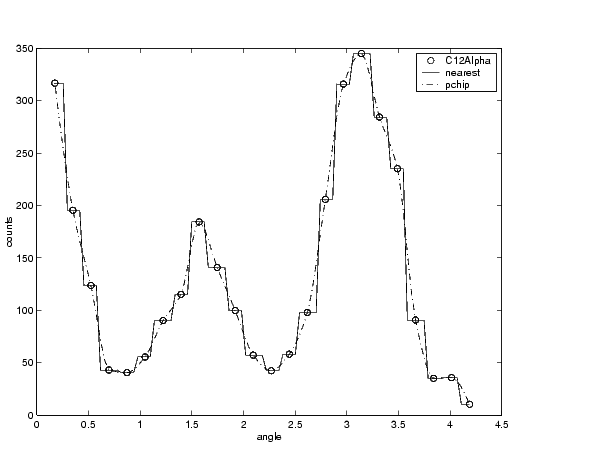

| Curve Fitting Toolbox |   |
Interpolants
Interpolation is a process for estimating values that lie between known data points. The supported interpolant methods are shown below.
The type of interpolant you should use depends on the characteristics of the data being fit, the required smoothness of the curve, speed considerations, postfit analysis requirements, and so on. The linear and nearest neighbor methods are fast, but the resulting curves are not very smooth. The cubic spline and shape-preserving methods are slower, but the resulting curves are often very smooth.
For example, the nuclear reaction data from the file carbon12alpha.mat is shown below with a nearest neighbor interpolant fit and a shape-preserving (PCHIP) interpolant fit. Clearly, the nearest neighbor interpolant does not follow the data as well as the shape-preserving interpolant. The difference between these two fits can be important if you are interpolating. However, if you want to integrate the data to get a sense of the total unormalized strength of the reaction, then both fits provide nearly identical answers for reasonable integration bin widths.

Interpolants are defined as piecewise polynomials because the fitted curve is constructed from many "pieces." For cubic spline and PCHIP interpolation, each piece is described by four coefficients, which are calculated using a cubic (third-degree) polynomial. Refer to the spline function for more information about cubic spline interpolation. Refer to the pchip function for more information about shape-preserving interpolation, and for a comparison of the two methods.
Parametric polynomial fits result in a global fit where one set of fitted coefficients describes the entire data set. As a result, the fit can be erratic. Because piecewise polynomials always produce a smooth fit, they are more flexible than parametric polynomials and can be effectively used for a wider range of data sets.
 | Nonparametric Fitting | Smoothing Spline |  |